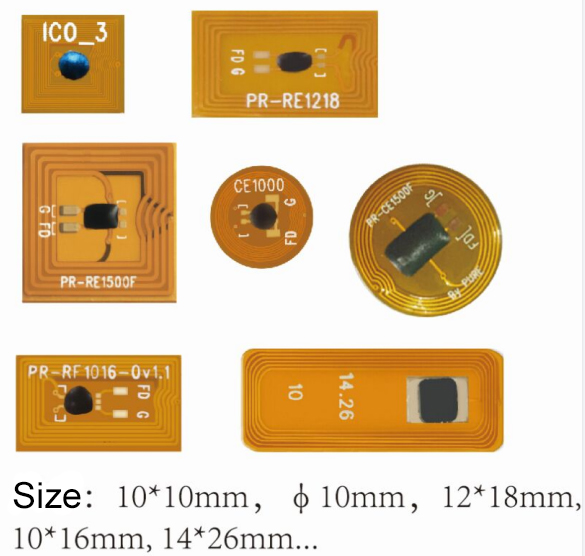Introduction to RFID Microchips
RFID microchips, also known as radio frequency identification microchips, are small electronic devices that use radio waves to transmit and receive data wirelessly. These chips consist of an integrated circuit and an antenna, allowing them to communicate with RFID readers or scanners. The technology behind RFID microchips enables the identification and tracking of objects, animals, or even humans, without the need for direct contact or line of sight.
1. The Working Principle of RFID Microchips
RFID microchips operate on the principle of electromagnetic coupling. When an RFID reader emits radio waves, the microchip’s antenna receives the signal and powers up the integrated circuit. The chip then transmits its unique identification code or other relevant data back to the reader, which can be used for various purposes such as inventory management, access control, or authentication.
2. Applications in Supply Chain Management
RFID microchips have revolutionized supply chain management by providing real-time visibility and traceability of goods throughout the entire logistics process. By embedding these chips in products or packaging, companies can accurately track inventory, monitor shipment progress, and optimize their supply chain operations. This technology enables efficient inventory management, reduces losses due to theft or misplacement, and enhances overall supply chain transparency.
3. Enhancing Healthcare with RFID Microchips
In the healthcare industry, RFID microchips offer numerous benefits, ranging from patient safety to inventory management. These chips can be used to track medical equipment, ensuring that critical devices are readily available when needed. Additionally, RFID-enabled wristbands or tags can enhance patient safety by accurately identifying individuals and matching them with their medical records, reducing the risk of errors and improving overall care quality.
4. RFID Microchips in Retail
The retail sector has embraced RFID technology to streamline operations and enhance the shopping experience. By tagging products with RFID microchips, retailers can automate inventory management, enabling real-time stock monitoring and reducing out-of-stock situations. Moreover, RFID-enabled checkout systems allow for faster and more accurate transactions, improving customer satisfaction and reducing queues.
5. Security and Privacy Considerations
While RFID microchips offer numerous advantages, security and privacy concerns have been raised regarding their usage. As these chips transmit data wirelessly, there is a risk of unauthorized access or interception. However, encryption and authentication protocols can be implemented to mitigate these risks. Additionally, privacy concerns arise when RFID microchips are used for tracking individuals. Striking a balance between convenience and privacy is crucial to ensure the responsible and ethical use of this technology.
Conclusion
RFID microchips have revolutionized various industries, enabling seamless tracking, monitoring, and identification of objects. From supply chain management to healthcare and retail, the applications of RFID technology are vast and continue to expand. As this technology evolves, it is essential to address security and privacy concerns to ensure its responsible implementation. With its potential to enhance efficiency, improve security, and transform industries, RFID microchips are undoubtedly a game-changer in the world of technology. Embracing this innovation will pave the way for a more connected and intelligent future.




